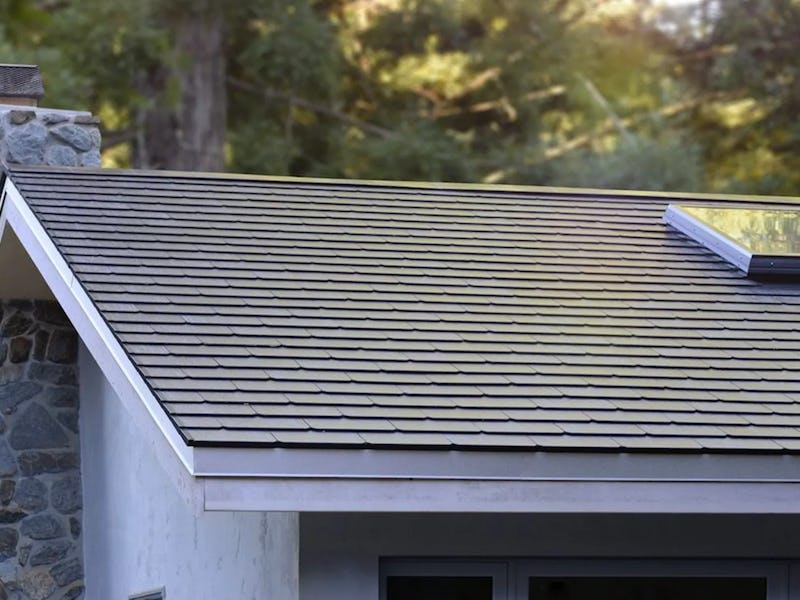Tesla Shines With High Solar Roof Sales in Company's Earnings Call
The product is making waves in the market.

The Tesla Solar Roof is flourishing in the sunshine. During the company’s second-quarter earnings call on Wednesday, CEO Elon Musk revealed the company has already installed a big number of roofs — and it’s got big plans for the future, with higher production rates expected for the following year.
“We now have several hundred homes” with solar roof installation underway Musk said. “It takes a while to just confirm that the Solar Roof is going to last for 30 years and all the details work out, and we’re working with first responders to make sure it’s safe in the event of a fire and that kind of thing. So it’s quite a long validation program for a roof which has got to last for 30, 40, 50 years, but we also expect to ramp that up next year at our Gigafactory 2 in Buffalo.”
The Tesla Solar Roof.
It’s hard to say for sure how much each roof cost, as it varies on size and the ratio of solar-harvesting tiles to “dummy” non-solar tiles. Solar tiles cost $42 per square foot, while non-solar costs $11 per square foot. Tesla recommends $21.85 per square foot, based on 35 percent solar tiles. While Amanda Tobler bought a 2,000-square-foot roof for her home with 40 percent solar for $50,000, Tri Huynh paid $85,000 for a 1,000-square-foot roof with 70 percent solar.
Musk also noted that the company is “cell-starved” for the Powerwall, the battery unit sold with the solar roof to provide clean energy when the sun isn’t shining. Tesla had to “artificially limit” the number of Powerwalls shipping to meet its goals, and it now expects to ramp up production on these and the business-focused Powerpacks later this year and early next year.
Tesla is set to share more details about its solar efforts during the company’s next earnings call, scheduled for three months’ time from now. The next call should provide more detail about whether the hot summer months have persuaded more people to go solar.
This surge in sales isn’t entirely unexpected, though — after the first installations went live in April, price comparison site EnergySage told Inverse that it was seeing a 45 percent spike in visits to relevant content on its website.